Boot: 2022-2023 Tecnica Zero G Tour Scout W
Test Location: Crested Butte, Colorado
Days Skied: 13
Stated Flex: 115
Available Sizes: 22.5-27.5
Stated Last (size 26.5): 99 mm
Stated Range of Motion: 55°
Stated Forward Lean: 12° (can be adjusted to 13°)
Size Tested: 24.5
Stated Boot Sole Length (size 24.5): 283 mm
Blister’s Measured Weight (size 24.5):
- Shells, no Liners: 1052 g & 1052 g
- Liners, no Footbeds: 185 g & 188 g
- Shells + Liners = 1237 g & 1240 g
- Stock Insoles: 60 g
- Removable Spoilers: 33 g
Buckles: 4 Light Magnesium; Hiking position
Powerstrap: 35 mm cam-style with hook
Shell Material:
- Cuff: Polyurethane
- Lower Shell / Shoe: Grilamid® w/ Quick Instep
Soles: Nonremovable, full Vibram rubber, ISO 9523
Binding Compatibility: Tech / pin bindings, MNC bindings
Tech Fittings: Yes
[Note: Our review was conducted on the 21/22 Tecnica Zero G Tour Scout W, which returns unchanged for 22/23.]
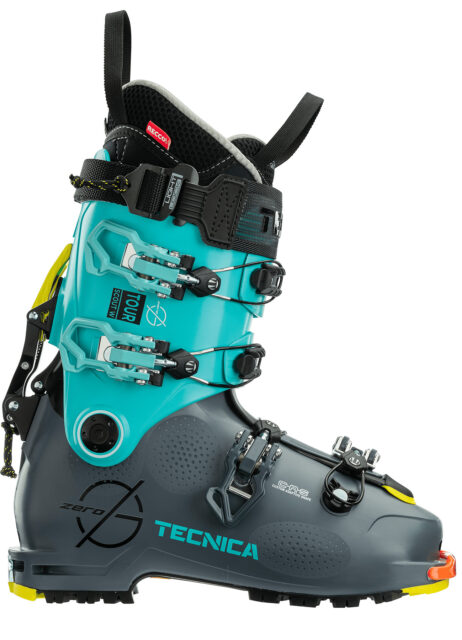
Intro
For the past several seasons, Tecnica’s Zero G series has created something of a benchmark for boots that are quite light, tour well, and ski really well, given their weight class below ~1400 grams. The Zero G Tour Scout W is positioned as the stiffest women-specific boot in the Zero G lineup, offered at a stated flex of 115.
The Zero G Tour Scout W became my main touring boot throughout the 22/23 season, when I used it in the backcountry around Crested Butte, and it’s also been the lightest, most walkable boot I have ever toured in. The Zero G Tour Scout W has provided an impressive balance of fit, uphill performance, and downhill performance, and I have plenty more to say about it.

Women-Specific Aspects of the Tecnica Zero G Tour Scout W
The Zero G Tour Scout W, as one of Tecnica’s women-specific models, offers a shorter cuff than their men’s / unisex Zero G. However, Tecnica offers their men’s / unisex 130-flex Zero G Tour Pro starting at a size 22.5, which is worth noting for folks with small feet who want something stiffer than the Zero G Tour Scout W.
What Tecnica Says About the Zero G Tour Scout W
“A four-buckle touring boot that feels lightweight on the uphill and locks in for high performance turns on the descent, the Zero G Tour Scout W is unrivaled for experienced female backcountry skiers. Weighing just 1,360 grams (for a size 26.5)—a fraction of the weight compared to other ski boots—it boasts a 55-degree range of motion so you can glide without resistance on the skin track. On the descent, the 115 flex provides the support needed for making aggressive, confident turns down every type of terrain that crosses your path.”
The Tecnica Zero G Series
For a detailed breakdown of the Zero G series, please refer to our Deep Dive on Tecnica Ski Boots Brand Lineup. Here are the boots in the Zero G, with their stated flex numbers and MSRP:
- Zero G Tour Pro (130 flex): $899.95
- Zero G Tour Scout (120 flex): $799.95
- Zero G Tour (110 flex): $699.96
- Zero G Tour Scout W (115 flex): $799.95
- Zero G Tour W (105 flex): $699.95
Shell
The Zero G Tour Scout W features a polyurethane upper cuff and a Grilamid lower shell, with Tecnica’s softer “Quick Instep” material over the instep area for easier entry / exit.
Liner
The Zero G Tour Scout W has a liner that I would classify as minimal (as to be expected, given its weight), but highly functional. Along with the men’s / unisex Zero G Tour Pro and Tour Scout, the Tour Scout W is built with Tecnica’s fully heat-moldable, “Light Fit” liner with removable laces.
I didn’t feel the need to heat mold the liner upon receiving the boot. I found the liner to break in quickly after a couple of tours, but I also haven’t found it to be packing out too quickly, despite its low weight (about 186 g per liner @ size 24.5). It’s pretty thin and minimal, featuring bellows above the Achilles. I have also found the liner to be relatively quick to dry, which was especially obvious after several super warm days of touring. Overall, the liner performs well on the ascent and descent by holding my heel snugly and eliminating any rubbing or movement.
Walk Mechanism
The Zero G family of boots are all built with the same robust, external walk mechanism that Tecnica calls the “Double Blocking Mobility Cuff System.” All of the boots in the Zero G series feature a stated 55° of range of motion (aka, “ROM”).
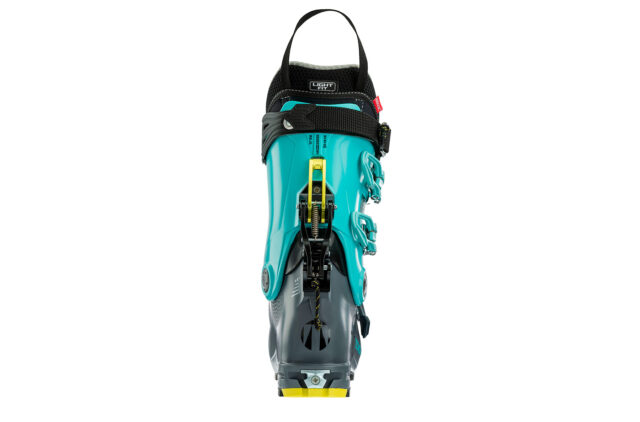
This is a burly and rather oversized walk mechanism and looks and feels comparable to the Atomic Hawx Ultra XTD, with the main difference being that the Zero G’s “Double Blocking” version connects at two points: at the bottom, like most boots with similar mechanisms, and closer to the top of the cuff, which is more specific to the Zero G’s design. I found it to be super easy to engage and disengage, even when in thicker gloves. It is a fully serviceable part, affixed by Phillip’s head screws, and can be fixed and / or replaced. The walk mechanism also provides the option of increasing the forward lean by 1° (from 12° to 13°).
Buckles
The Zero G Tour Scout W is built with four magnesium buckles, all of which offer micro-adjustments. The buckles utilize a cable to connect to the buckle catch, which is a pretty nice system overall, but sometimes is a little bit harder to line up and close than the more traditional buckle. Overall, I found the buckles to work really well and were easy to adjust between the ascent and descent positions.
Power Strap
The Zero G boots feature Tecnica’s “Light Hook” power strap which essentially consists of a hook to attach / detach the strap, a pull cord for quick release, and a cam-style mechanism for tightening. Overall, I think it’s a functional design for securing the strap, while also being minimalistic. I found it easy to use, and the pull cord makes it easy to slightly loosen for transitions, while not having to fiddle with achieving the right snugness from the power strap all the time.
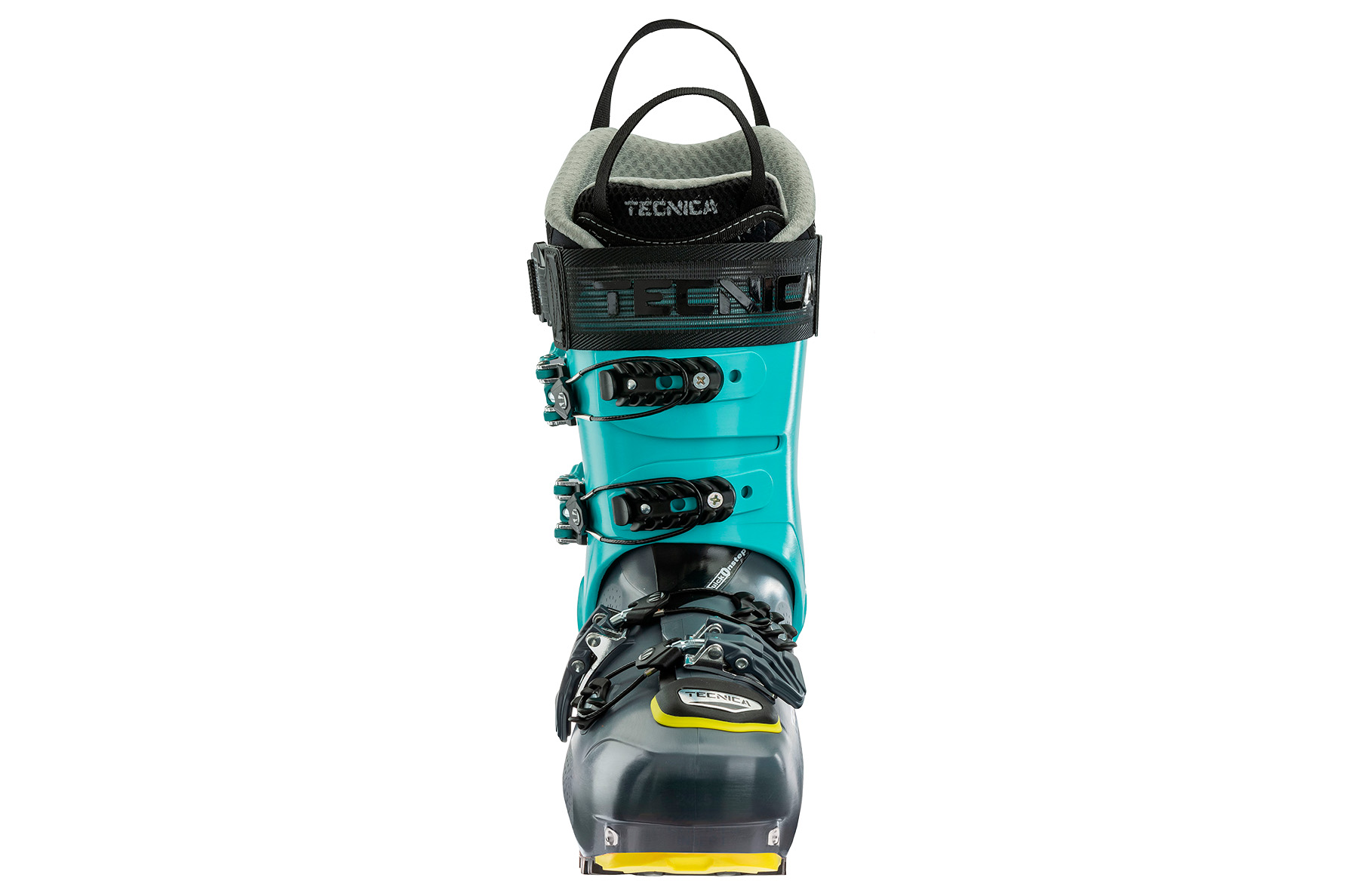
As far as lightweight power straps go, I prefer this system to a minimal velcro strap, as I found it to be easier to cinch and adjust, while still providing noticeable support at the upper cuff of the boot. The Zero G Tour Scout W’s power strap is 35 mm wide, which isn’t as broad as the Zero G Tour Pro, but still wider than many similarly lightweight touring boots.
Spoiler
The Zero G Tour Scout W comes with a tongue spoiler in the box. While there’s no method for permanently installing the spoiler to either the tongue or the back of the liner, it can stay relatively in place through the already existing velcro on this mini spoiler. I began using this spoiler on the tongue to both take up excess volume, and bring me to a more upright stance since I have limited ankle dorsiflexion, and the cuff was feeling loose. This seemed to work well, but it stayed in place best when my buckles were cinched for the descent position. It would be easy to install a small strip of velcro on the tongue for this spoiler to better adhere to.
Soles
The Zero G Tour Scout W is built with a nonremovable Vibram rubber sole. It features a fairly open tread and is pretty grippy for traction. The only downside to this sole is that is nonreplaceable (as is true of most touring boots), but thus far, it seems plenty durable. FWIW, our pair of the Zero G Tour Pro, which has the same sole, is still holding up pretty well after roughly 70+ days of use.
Weight & Comparisons
The Tecnica Zero G Tour Scout W is the lightest women-specific touring boot I have personally tried, though it’s not as light as some of the more uphill-oriented alternatives. While there are lighter boots built for the ascent, the Zero G Tour Scout is one of the lighter boots with a stated flex of 115 and that’s built with aggressive skiing in mind.
For reference, here are some of the weights of several relevant touring boots. Our measured weights list the weights of the two shells in a pair + the two liners.
21/22 Scarpa F1 LT W (27): 930 g (stated weight)
21/22 Atomic Backland Pro W (24.5): 1030 g (stated weight)
22/23 Tecnica Zero G Tour Scout W (24.5): 1052 & 1052 + 185 and 188 = 1237 & 1240 g
21/22 Scarpa Gea RS (25): 1250 g (stated weight)
21/22 Dynafit Hoji W (24.5) 1230 g (stated weight)
22/23 K2 Dispatch LT W (24.5): 1120 & 114 + 235 + 232 = 1355 & 1346 g
22/23 Hawx Ultra XTD 115 W CT GW (24.5): 1458 g (stated weight)
21/22 Rossignol Alltrack Elite 110 LT W (24.5): 1530 g (stated weight)
21/22 Salomon Shift Pro AT (24.5): 1570 g (stated weight)
22/23 Lange XT3 110 LV W (24.5): 1614 g (stated weight)
22/23 Tecnica Cochise Pro W (24.5): 1285 & 1289 + 343 & 330 = 1628 & 1619 g
22/23 Head Kore 105 W (24.5): 1372 & 1373 + 407 & 405 = 1779 & 1778 g
Fit
As always, I will highly recommend a visit to your trusted boot fitter to help determine which boots can work best for you, especially when it comes to the fit of a touring boot.
Overall, the fit of the Zero G Tour Scout W works really well for my low-volume foot. As mentioned in the Flash Review I posted, the initial fit had me a little skeptical that I was going to be able to tour comfortably, because of my first impression of how short and snug the toe box felt. For reference, I measure a 25.5 fully weighted, and typically wear a 24.5 comfortably, so long as I support my arches and account for my rigid ankle dorsiflexion. I have a finicky foot, so I quickly resorted to my go-to modifications, to see where this left the overall initial fit. I added my low-volume, custom insole for touring, and around 3° of ramp angle. Immediately, the fit of the boot provided a nice even snugness, and I was still able to wiggle my toes.
After 10+ days in the boot, including some all-day tours, overnight camping, and long days standing around for my AIARE 2, I have been impressed with the overall comfort and snugness provided by the Tour Scout W; I have found it to offer the right balance of both. When in walk mode, I still notice a bit of closeness from the top and front of the toe box, and while this is something I am quite used to, I have a feeling that, for some people, this type of fit in the toe box would feel a bit too tight for a touring boot. The boot sole measurement itself (283 mm) is a few millimeters shorter than most size 24.5 boots, though that doesn’t necessarily speak to the length of the interior clog itself. Regardless, for people who fall in between boot sizes, it might be wise to try both sizes on.
The Zero G also falls on the lower-volume side across the instep, but not in a way that caused any foot numbness for me. For reference, it feels comparably snug in the toes and instep as my alpine boot, the Nordica Promachine 115 W, which is one of the more snug fits I have encountered. Again, this worked for my foot and my preferences, and it didn’t create cause for concern since I had adequate blood flow. The good news is that the Zero G Tour Scout is also low-volume in the heel / ankle pocket, which remained snug and locked down when skinning up and skiing down. Overall, I find the fit to be pretty comparable to the Atomic Hawx Ultra XTD 115 W, though the Hawx Ultra XTD feels a little roomier across the instep.
Interestingly, the Zero G’s cuff has proven to be the hardest part when trying to achieve a snug fit. I ended up moving the buckle catches in, and I am still maxing out the buckles at times, even after utilizing the micro-adjustment to shorten the buckles. All said, this works fine for the uphill and it’s super easy to loosen up for going uphill, but there’s been more than a few times where I felt the cuff of the boot feeling looser than I prefer. The best mechanism for dealing with this has been the power strap, which isn’t particularly robust but does provide a hook / cam mechanism that I can pull quite snug to eliminate excess volume at the top of the boot and gain more contact and support from the upper cuff. I also messed around with adding the tongue spoiler to the front of the tongue, which I touched on above, and this has helped to even out pressure along my shin and reduce volume.
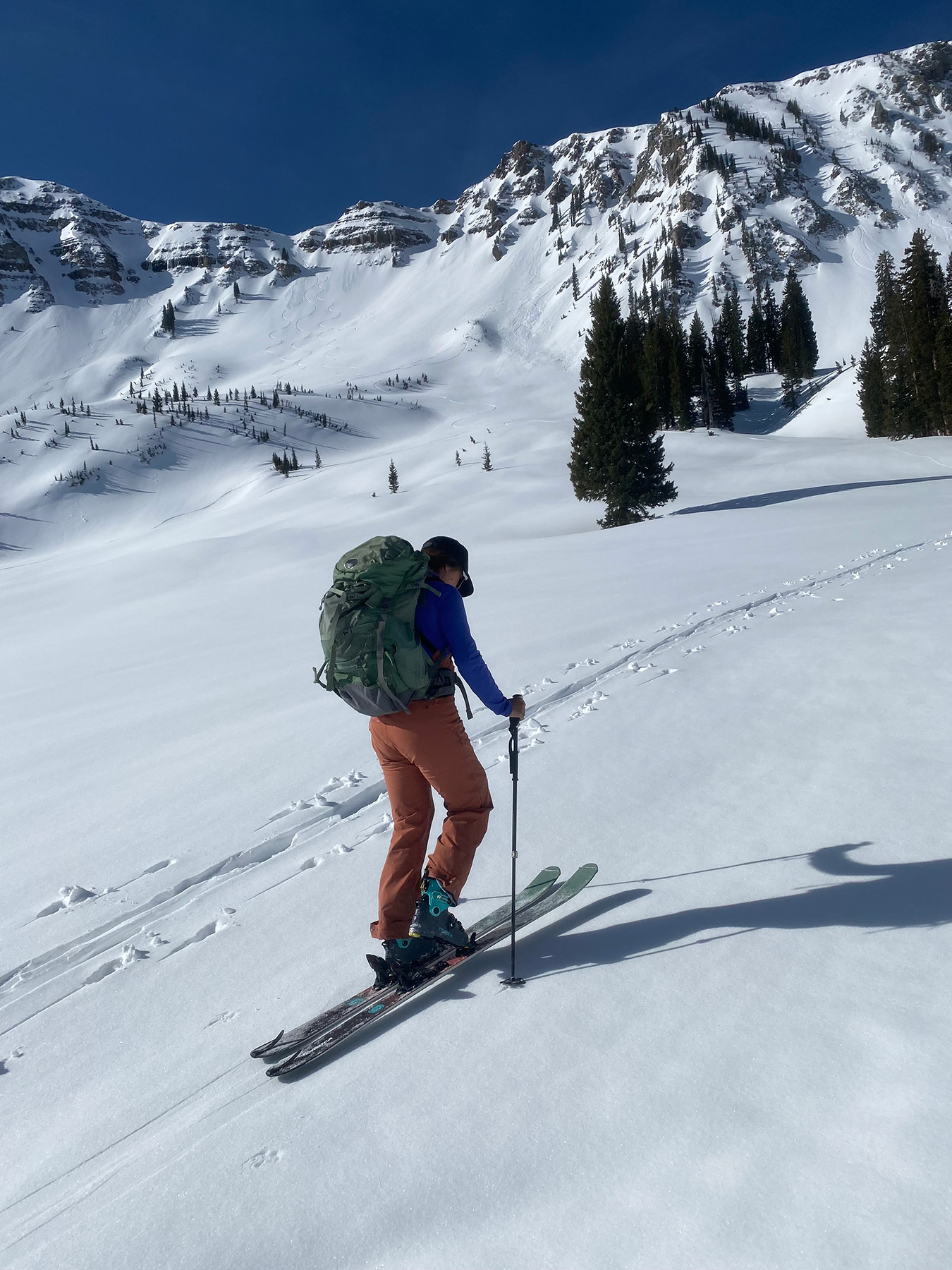
Overall, the Zero G Tour Scout W is going to work best for someone with a low-volume foot and who prefers a snugger fit. That said, it is built with Tecnica’s C.A.S. shell (designed to make stretching easier) and a Grilamid lower, so it’s not unreasonable to gain some volume via some stretching around the metatarsals and forefoot from a trusted boot fitter.
FULL REVIEW
Uphill Performance
Kara Williard (5’9”, 167 lbs / 175 cm, 75.7 kg): Overall, this was a big upgrade for me in terms of uphill performance, and spending time in the Zero G Tour Scout W this season has helped to progress my uphill abilities because it walks exceptionally well compared to other touring boots I’ve used. Its low weight, nice ROM, and walk mechanism combine to offer a really smooth uphill motion, and it let me get more comfortable on even the steepest of skin tracks.
Range of Motion
The range of motion the Zero G Tour Scout provides feels smooth and natural. It provided enough ROM for me to get full leg extension and plenty of glide in a smooth, natural gait on the ascent. While there are even lighter boots that walk better and offer more than the stated 55° ROM in the Zero G, the Tour Scout works well for me.
As a downhill-oriented backcountry skier, I am someone who likes a little more support from a boot and consequently toured in a lot of heavier “50/50” boots like the Tecnica Cochise and Lange XT series, so getting into the Tour Scout W opened up a new world for me and its 55° ROM felt like more than enough, compared to what I was used to. Compared to the Tecnica Cochise Pro, the Zero G provided substantially more usable range of motion and an overall smoother gait, particularly in rearward motion and leg extension, despite the Cochise only having a reported 5° less ROM.
Transitions
With its oversized walk mechanism, buckles, and power strap, the Zero G Tour Scout W makes for pretty easy transitions. It’s still a 4-buckle boot and there are plenty of boots with simpler, quicker designs (e.g., 2-buckle layouts or the BOA system), but the Tour Scout is built with details that help make it efficient to transition, even with gloves on. The buckles are pretty large and easy to tension, and I had minimal issues lining up the cable latches. The walk mechanism is easy to lock down, though I found it to be easiest to lock down when the cuff of the boot was tightened first, because then just a little bit of forward flex helps to line up the walk mechanism with the latch.
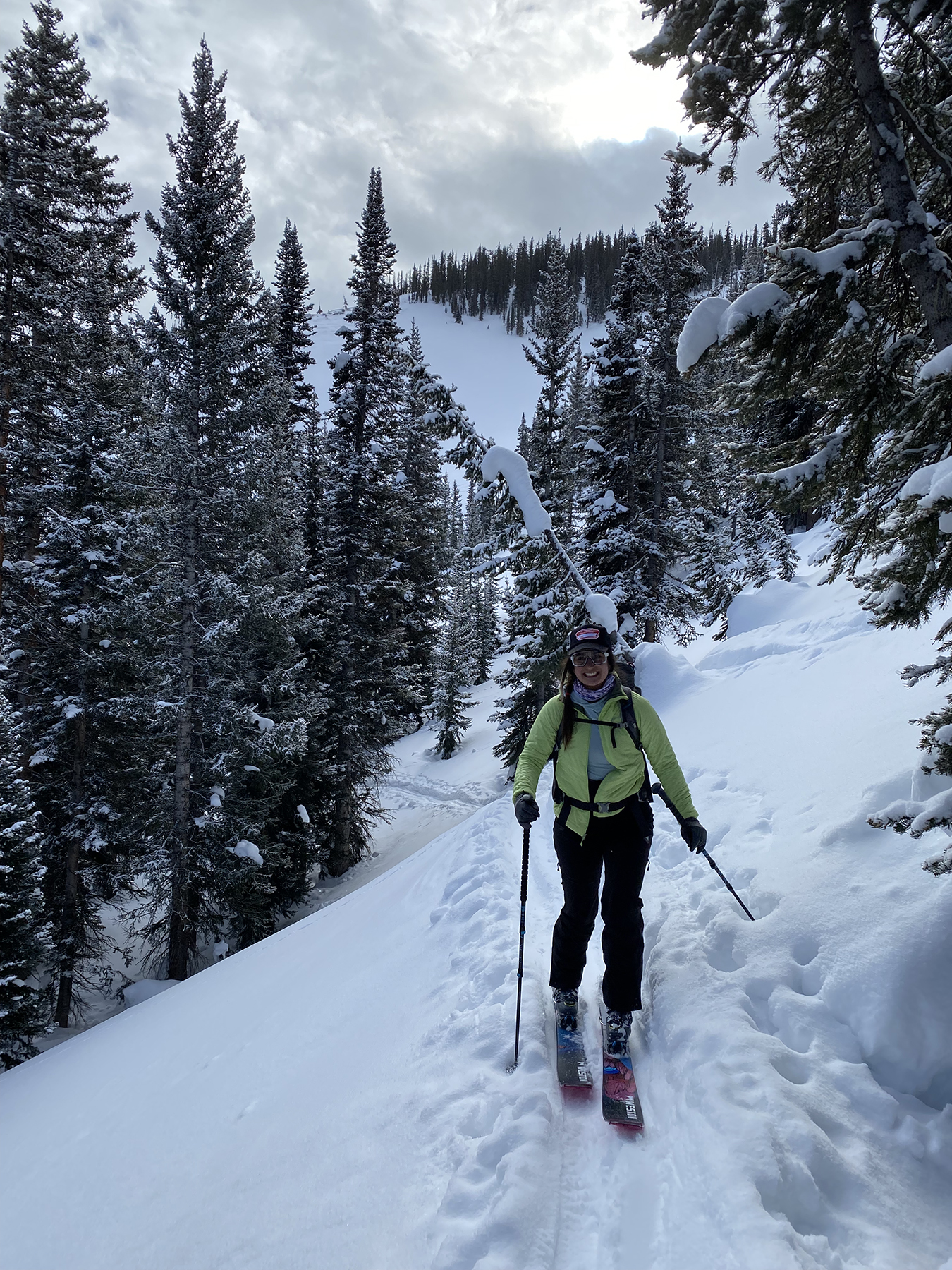
Soles / Traction
I found the Zero G Tour Scout’s Vibram sole to be plenty grippy and durable. While I haven’t tested it on highly rocky traverses or icy boot packs, I have done a decent bit of hiking on firm / refrozen snow, where it provided enough traction to feel secure, and it also feels locked in on the rails of a snowmobile. I also noticed that it doesn’t tend to glob or ice up as much as I have noticed from some GripWalk or WTR plastic / rubber soles.
Downhill Performance
Flex Pattern
Overall, the Zero G Tour Scout has proven stiffer and more supportive than I was initially expecting, as someone who tends to choose heavier 50/50 boots in the backcountry because my difficult foot benefits from a stiff and supportive shell, namely the 18/19 Lange XT 130 LV and the Tecnica Cochise Pro W. The Tour Scout W has felt plenty stiff and supportive in most scenarios, especially when skiing lighter pow or more forgiving snow.
Where I began to question the lateral stiffness and overall support from the Tour Scout W was on really crusty snow or firm crud. I often felt myself attempting to over-buckle when the conditions were more variable, which was hard, given that the cuff already felt loose. This is why I am very curious to test the men’s / unisex Zero G Tour Pro, because it has a stated flex of 130 and features a taller cuff. There were definitely instances on firmer snow where I found myself over-flexing the Zero G Tour Scout W and feeling unsupported off the top of the boot.
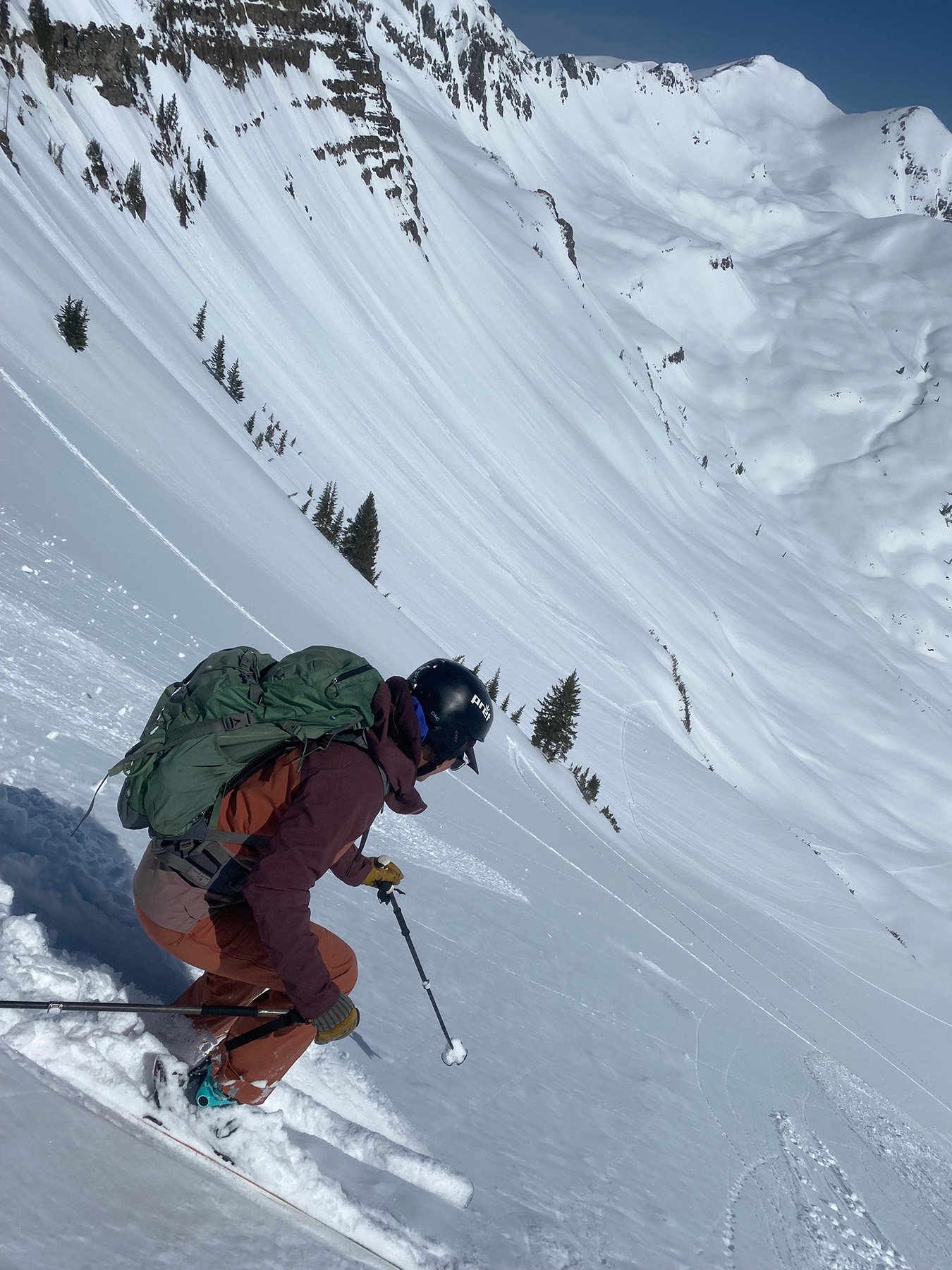
Compared to the Cochise Pro W, which has a stated flex of 120, the Tour Scout W felt a bit softer, but overall it just feels a lot shorter in the cuff, which led to several occasions where I felt like I was over-flexing the boot and feeling it fold beneath me. Compared to the 18/19 Atomic Hawx Ultra XTD 115 W, I also found the Tour Scout W to feel a bit softer, but the Tour Scout W also felt like it offered a smoother, more progressive flex pattern.
It would be interesting to try the unisex version to see if the higher cuff feels drastically more supportive (the unisex Zero G Tour Scout has a stated flex of 120). Overall though, the Zero G offers a progressive flex pattern that’s pretty stiff for a lightweight touring boot, it just doesn’t match the overall support of some heavier boots with similar stated flex ratings.
Suspension
For a boot that is significantly lighter than what I am used to skiing, I found the Zero G Tour Scout W to offer a surprisingly smooth ride and it does a pretty good job of muting out rough snow conditions. It felt great when there was a smooth or supportive base or crust, as well as when navigating heavy or light powder, or chop. I found the boot to be slightly lacking in suspension when the snow was firm or had some breakable crust.
The suspension of Tecnica Cochise Pro W is substantially better in rough snow and firm crud, making it a much better choice if you’ll frequently be using one of these boots in the resort on firm-conditions days. But I am still impressed by the Tour Scout W’s ability to feel pretty smooth and supportive in a variety of conditions, given its low weight.
Durability
I have been pleased with the durability of the Zero G Tour Scout W so far. I appreciate that it’s a highly-serviceable boot; the only fixed rivets that exist are at the cuff. The buckles can all be replaced, as can the walk mechanism. The plastic seems pretty resistant to scratches and gashes, aside from when my foot got stuck on the rail of a snowmobile and I bent the buckle and took a little chunk out of the toe lug. This is not to say that the boot looks impeccable after 13 long days of touring in it. There are definitely some scuffs, but overall, as a boot with a Grilamid lower, I don’t find the plastic to be overly soft to the point where I am concerned about long-term durability. For reference, our pair of the Zero G Tour Pro, which we’ve used over multiple seasons, has plenty of superficial scratches, but it’s still functioning just fine.
Getting In / Out
It quickly became obvious to me how much of a struggle I have getting in and out of the Zero G Tour Scout while keeping the liner and shell as one piece (i.e., with the liner staying in the boot).
This was a result of a mixture of my high arch / instep, rigid ankle, the fit of the really low volume instep, the liner which completely collapses if you try and force it too hard, and — several of the times — cold temperatures.
I quickly resorted to the “world cup entry” where the liner and the shell are taken off and put on separately. This is a pretty easy approach in this shell, and it avoids the excruciating bite on the top of my foot that I suffered several times before figuring this out. I also found this approach to work better with laces, as it helps keep the liner in its correct shape as I shove my foot in and out. Even when the shell was exceptionally cold, such as when winter camping, I found the “world cup entry” to work just fine, and it seems like the best approach to getting in and out of this boot. This will probably be true for most people unless they have a much lower-volume instep or a higher pain tolerance than me.
When it comes to shoving the liner in the shell, it’s actually really easy with the Zero G, which I can’t say for a lot of lighter touring boots, so that part is appreciated.

Who’s It For?
The Zero G Tour Scout W stands out as a top contender for someone (with a low-volume foot) who spends significant time going uphill, but still prioritizes a boot that offers a supportive and rewarding experience on the descent. As I mentioned several times, for a woman who tends to gravitate toward stiffer and more supportive boots and often feels limited by the stiffness of top-end of women-specific boots, I think the Zero G Tour Pro might be a better choice. There are several factors to keep in mind here, including the skier’s height / weight, preferences of cuff height, calf position, ankle flexibility, etc., so I am not proposing that all aggressive female skiers need to choose the unisex Zero G Tour Pro, but it is nice that we have options.
For me personally, as someone who is 5’9”, weighs 167 lbs, and skis alpine boots in the 115-120 flex zone, the Zero G Tour Scout definitely felt softer and shorter than I am used to. However, it was so impressive on the uphill, its fit was snug, and its downhill performance was still quite smooth and supportive for what it is, so it still stands out as a well-rounded touring boot that offers a whole lot in each of these key categories. The Zero G Tour Scout W really provides a remarkable balance of uphill and downhill capabilities that I hadn’t experienced before.
Bottom Line
While there are several boots that I would say cater to either more downhill-oriented or uphill-oriented skiers, the Tecnica Zero G Tour Scout W slots itself into a rare category where you can have a boot that walks really well, is lighter than most of its direct competitors, and still offers a stiff and progressive enough flex pattern for many folks to ski confidently and comfortably. And because Tecnica offers their top-end Zero G Tour Pro in sizes starting at 22.5, there is no reason to feel limited by options and flex ratings, in order to help maximize the downhill experience.


Great review!
Terrific insights!!